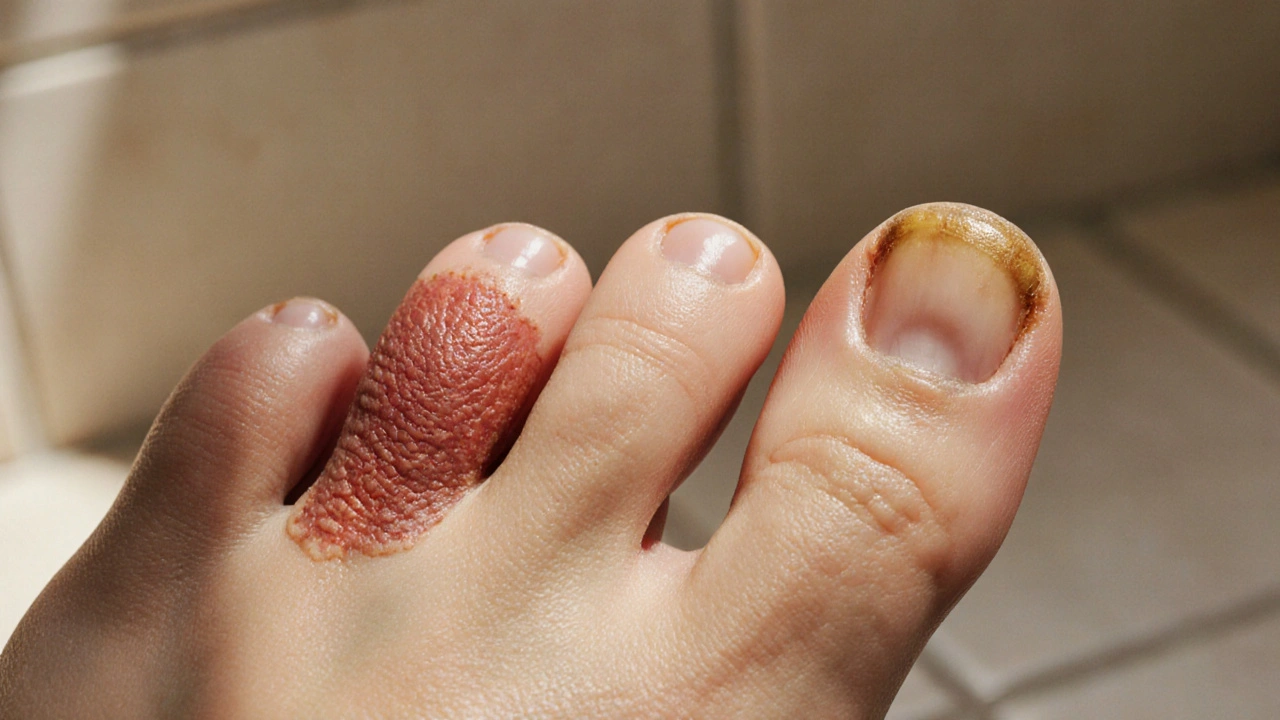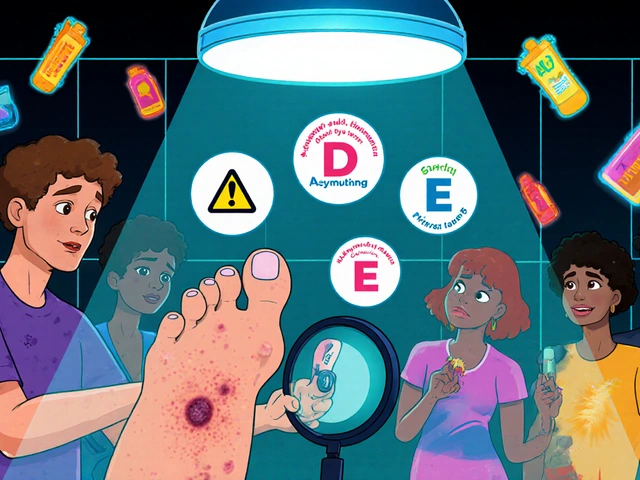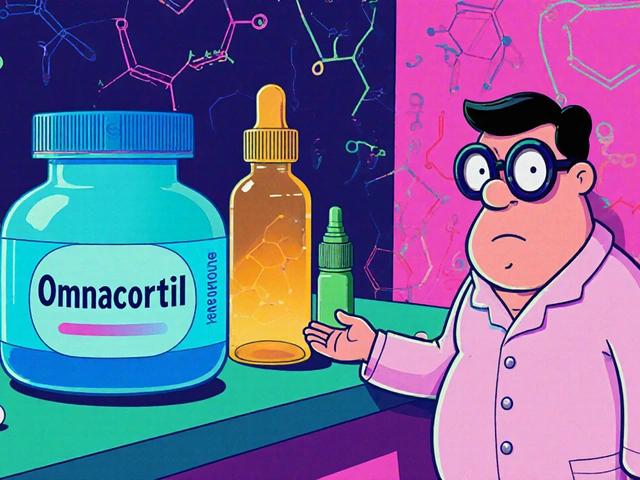Dermatophytes: Causes, Types, and What You Need to Know
When talking about dermatophytes, a group of keratin‑loving fungi that thrive on skin, hair and nails. Also known as skin‑infecting fungi, they are the primary culprits behind common conditions like athlete’s foot and ringworm. Understanding them helps you spot the problem early, decide on the right test, and pick an effective antifungal medication, drugs that stop fungal growth. Another key player is tinea, the clinical term for the skin eruptions these fungi cause, which includes several sub‑types you’ll hear about. Finally, onychomycosis, a nail infection caused by the same fungi is a stubborn version that often needs special care.
Every time you hear “tinea”, think of the specific forms: tinea pedis (athlete’s foot), tinea cruris (jock itch), tinea corporis (ringworm on the body), and tinea capitis (scalp infection). Each reflects where the dermatophyte settles, but they all share the same basic biology – feeding on keratin. The link is simple: dermatophytes cause tinea infections, and tinea describes the skin’s reaction. Knowing which part of the body is affected guides you to the right topical or oral therapy.
When the infection hits the nails, it becomes onychomycosis. This form is tougher because nails grow slowly, so the fungus hides under a hard plate for months. The result is thick, discolored nails that may crumble – a clear sign that the fungal invasion has gone deeper. Onychomycosis often follows an untreated tinea pedis, showing how one dermatophyte infection can migrate if you don’t act fast. Treating nail infection usually means oral antifungals and sometimes nail removal, highlighting the need for proper diagnosis.
Speaking of diagnosis, the gold‑standard test is a KOH preparation – a quick lab technique where a skin scrape is mixed with potassium hydroxide to reveal fungal hyphae under a microscope. Culture tests can identify the exact species, which matters because some dermatophytes respond better to certain drugs. In short, accurate diagnosis requires a KOH prep and sometimes a culture, linking lab work directly to effective treatment choices.
Once you have the right diagnosis, treatment options widen. Topical creams and sprays (like terbinafine or clotrimazole) work well for mild tinea on skin. For extensive or nail infections, oral antifungal medication (such as itraconazole or fluconazole) becomes necessary. The choice of drug depends on the infection’s location, severity, and the patient’s health profile. Remember, the goal is to eliminate the fungus while minimizing side effects, so a tailored approach is key.
Prevention is just as important as treatment. Simple habits—keeping feet dry, wearing breathable shoes, changing socks daily, and avoiding sharing towels—cut down the environment that dermatophytes love. In public spaces like gyms or pools, wearing flip‑flops and washing hands after contact reduces the chance of picking up spores. Good hygiene prevents the fungus from taking hold, creating a natural barrier before any infection can start.
Our collection below pulls together the latest advice on skin health, from managing inflammation after eye surgery to the role of exfoliation in preventing itch. While not all articles focus on fungal infections, they share a common thread: keeping the body’s outer barriers healthy. Dive in to see practical tips, detailed treatment guides, and evidence‑based recommendations that help you stay one step ahead of dermatophytes and other skin concerns.

Ringworm vs Fungal Nail Infections: How They're Connected
Explore how ringworm and fungal nail infections are linked, their causes, spread, symptoms, and effective prevention and treatment options.




